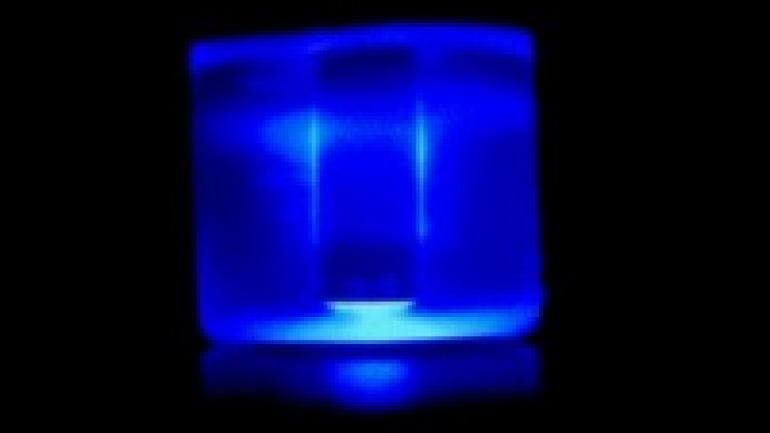In March 2002, the scientific world was rocked by some astonishing news: a distinguished US government scientist claimed he had made nuclear fusion out of sound waves in his laboratory.
Rusi Taleyarkhan’s breakthrough was such important news because nuclear fusion is one of the most difficult scientific processes, and also one of the most coveted. It could solve all of our energy problems for ever. In principle, sufficient fuel exists on earth to provide clean, pollution-free energy for billions of people for millions of years.
To make it happen, individual atoms must be slammed into each other with enough energy to make them fuse together, something that requires temperatures found only in the core of stars like our Sun – over 10 million Kelvin. The idea that these temperatures had been reached in a small scale laboratory using only soundwaves took many scientists by surprise. To them, fusion projects were huge multibillion-pound, intergovernmental schemes with the far off goal of producing energy in several decades time.
Taleyarkhan’s fusion breakthrough was based on a little-understood process called sonoluminescence. It’s a process that magically transforms sound waves into flashes of light, focusing the sound energy into a tiny flickering hot spot inside a bubble. It’s been called the star in a jar.
The star in a jar effortlessly reaches temperatures of tens of thousands of degrees, hotter than the surface of the sun. Many scientists had wondered if the core of the bubble was even hotter – maybe even as hot as the core of the sun. If so, fusion would happen there. But until Taleyarkhan, no one had been able to either prove it or disprove it.
The breakthrough and the paper in Science attracted great scepticism. When fusion takes place, particles called neutrons are given off. These are considered by scientists to be the key signature of nuclear fusion – but measuring neutrons on a small, laboratory scale had proven notoriously difficult in the past – and had even killed off an infamous fusion claim in 1989.
Many scientists didn’t believe that Rusi Taleyarkhan’ neutron detection was absolutely right. So to get to the bottom of the issue, the experiment was re-run by Mike Saltmarsh and Dan Shapiro, colleagues at the Oak Ridge National Laboratory. They couldn’t find any evidence of fusion. But the controversy escalated as Taleyarkhan’s team stood their ground and then, two years later, brought out a new paper showing even more fusion and more neutrons. This paper was thoroughly reviewed and published in another respected journal.
But the the controversy wouldn’t die down. Nuclear fusion from soundwaves would be a huge scientific breakthrough – and to be convinced of it, many scientists wanted to see better evidence, evidence that was absolutely incontrovertible. They wanted to look very precisely at the timing of the neutrons to see just how closely they were related to the flashes of light.
If they occurred at the exact same time, they would finally be convinced that fusion was taking place. But they wanted timing with incredible accuracy, that of a nanosecond, or a billionth of a second. This was one measurement that, though possible, still hadn’t been carried out by Taleyarkhan and his team.
So Horizon decided to try to sort out the issue once and for all. And we commissioned an independent team of leading scientists to conduct the experiment. Working from the instructions set out in Taleyarkhan’s paper, we assembled the same key scientific conditions to create nuclear fusion from sonoluminescence. To see if we could find fusion, we measured the neutrons and the flashes of light simultaneously with nanosecond accuracy, something that had never been done before.




Ranjoharbri, you’re incorrect. Nuclear fusion via sonoluminence has not been dis-proven, it just hasn’t been proven. Absence of evidence is not evidence of absence…and in fact there isn’t an absence of evidence, there is plenty of evidence. There’s an absence of proof, but that isn’t proof of absence.
This one appears to be down, however here is a link for a working version:
http://video.google.com/videoplay?docid=8522152695084736832
I have just wasted an hour of my life watching this bloody dribble. Horizon need a short sharp kick up the jacksy for even broadcasting a programme like this.
It has already been proven that cold fusion doesn’t take place through sonuluminence. This is just another example of documentaries crossing the border into sheer television entertainment. All smoke and mirrors and no substance. Sort yourselves out Horizon and go back to making fact based reporting documentaries.
Well most of the infrastructure is already in place as far electrical grid systems go, all that is needed for this type of fusion system are the reactors to produce heat and turbines and generators to convert the heat to electricity.
Or you can maybe use aneutronic fusion by way of a much smaller Plasma Dense Focus reactor system that produces electricity directly without the need of generators and turbines.
When it comes to fusion there are many different ‘flavors’ and processes that can potentially be used offering a range of sizes and costs and cost-effective systems, as well as varying environmental impact.
The best place for info on research into aneutronic fusion using the DPF device can be found here:
http://focusfusion.org/
It also provides some basic info on other fusion ‘flavors’ and advanced energy systems in general here(still under construction):
And it even includes a section for Fossil Fuels, though currently nothing is posted for it.
http://focusfusion.org/index.php/site/article/253/
its not cheaper, its additional sustainable, and superior for that surroundings, it truly is further costly to build the infrastructure for renewables than for fossil fuels